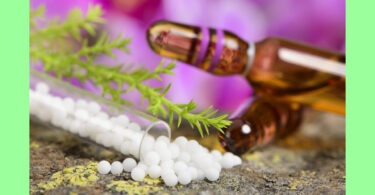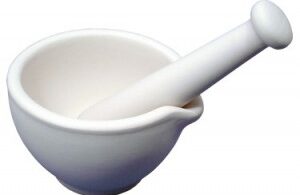PRESERVATION OF DRUGS: There are specific directions for the preservation of homoeopathic drug substances in the monographs of the Homoeopathic Pharmacopoeia of India and other Pharmacopoeias but the general rules are:
(1) A container or jar should be properly labelled while preserving a drug in it.
(2). All substances should be preserved in natural glass or earthenware vessels or jars, being well stoppered.
(3) For corrosive substances, such as acids or alkalies hard glass bottles with glass stoppers should be used.
(4). For storing Fluoric acid, gutta purcha bottles must be used, otherwise it may dissolve the glass.
(5) Drugs which may be affected by the light or sunlight ‘actinic’ glass bottles (coloured) covered outside with a solution of asphaltum or black varnish should be used.
(6). Avoid blue-coloured container, as blue colour has some on dynamic effects injurious to drugs.
(7) Yellow or amber coloured bottles exposed to sunlight (or” sometime, acquire medicinal virtue, so they should be avioded.
(8) Keep the container with the medicinal substances away from dust, odours, smoke, moisture, damp, strong light etc.
(9) Strong smelling drugs, such as Asafoetida, Camphor, Iodine, Kreosote, Moschus, Terebinthinae, oleum etc. should be kept isolated in tightly closed bottles, so that the peculiar odours of such drugs may not contaminate other drugs.
(10) The drug substances should be used for the preparation immediately after their collections.
(11) If a fresh drug cannot be used immediately, it must not be allowed to dry; by keeping them in a cold air space.
(12) Drugs which are to be preserved for a considerable time may be dried in a chamber , allowing hot air to flow for drying the drug substances.
(13) Drugs possessing the power of mutual reaction should be preserved separately.
(14) If fresh drugs are to be collected from a distant place, they should be packed loosely and carefully in paper-pulp cases and kept as cool as possible.
(15) Drugs which need drying before transportation or preserving, they should be carefully dried by tying in loose bundles, and hanging in a shade away from direct sun light, ram. dust, worms, insects etc.
(16) Plants or their parts should be kept in a dry, cool, dustless, odourless place or a little amount of purified (distilled) water may be sprinkled upon them from time to time.
(17) For preserving pulverised drugs, they should be perfectly dry, otherwise their moisture content may mould, Their dryings should be made by spreading the pulverised materials on a water-bath, or for a bigger quantities, in a temperature adjustable drying chamher.
(18) Animals and animal products decompose very quickly hence they should be used immediate after collections, If required they may be preserved in freeze. Venoms can be preserved in deep freeze being kept in glycerine; or sometime after collections, they are quickly freezed and preserved properly.
PRESERVATION OF MOTHER PREPARATIONS
(1) The mother trnctures should be kept at an even temperature of about 60 f (15.6″C)-Lawrence Ashwell.
(2) They should be stored in new well. cleansed, colourless, neutral flint glass bottles.
(3) Pyrex, or other anticorrosive glass bottles with glass stoppers should be used for storing acid or caustic preparations.
(4) Medicines which are not affected by sunlight, as such, or glass bottles covered wIth a solution of asphalum or black varnish, should be used.
(5) Dr. Burt advises to avoid blue-coloured bottle, as they have certain dynamic effects injurious to medicines.
(6) Yellow or amber-coloured bottles should not be used, as even non-medicinal substances contained in these bottles exposed to sunlight for sometime. acquire medicinal viruces.
(7) They should be stored in a dry, cool place in airtight well closed glass bott es.
(8) Avoid too much heat or cold. Some mother tinctures may become turbiid with muddy sediment, or even form crystals if exposed to great cold.
(9) Avoid everything that will in the least affect the purity of the mother tinctures, such as strong light, direct sunlight, smoke, dust, damp, strong odour etc.
(10) Strong-smelling mother tinctures, such as Asafoetida, Camphor, Iodine, Moschus, Terebinthinae oleum, jacoris etc. should be kept separately in airtight well-closed glass bottles.
(11) In case of glass stoppered bottle, both the bottle and the stopper should be of hard potash glass to avoid introduction of glass particles in the mother tincture.
(12) Mother tinctures should be well. filtered before storing or when dispensing.
(13) All containers should be properly labelled in proper pharmaceutical name mentioning their strength/potencies and alcohol contained by % v. v., date of manufacturing, name of manufacturer, as far as possible, while storing, The sign is affixed after the name of each mother tincture, e.g., Avena Sativa@.
PRESERVATION OF POTENTISED MEDICINES
(I). Potentised medicines after putting in well-stoppered bottles, should be preserved in boxes or drawers.
(2) For preserving potentised medicines coloured bottles should be avoided.
(3) Medicines which may be affected by light or sunlight actinic glass bottles covered with a solution of asphaltum or black varnish should be used.
(4) They should be preserved in a dry cool place, protecting from too heat or cold.
(5) Avoid everything that in the least affect the purity of the potentised medicines, e.g., dust, odours, smoke, damp, strong light etc.
(6) Name of the potentised medicine with the respective potency and the scale used. should be distinctly marked both on the cork and on the container’s label, e.g. Belladonna 6x, Belladonna 6 or Belladonna 0/6 etc. In marking the label the date of manufacturing and the name of the manufacturer should also be stated.The original manufacturer should also write down the batch number and the percentage of alcohol contents by volume, if possible the date of Expiry should also be given.
(7) Bottles should not be filled entirely full, as the potentised medicines shall come in contact with the corks.
(8) Potentised medicines should be preserved separately from thc crude drug substances and mother tinctures.
(9) If the liquid or solid potentised medicines change their normal colours, they should be rejected immediately.
(10) Preparations of camphor should always be kept separate, otherwise they may antidote almost all medicines of vegetable origin.
(11)In the rooms where potentised or Mother drug substances are to stored, no other odorous or non-odourous evaporating substances should be kept strictly. For storing the potentised medicines in small 5 ML or 10 ML vials, suitable wooden boxes should be made and they should be arranged alphabetically with gradual increasing potency horizontally. Separate boxes for different potencies may also be used.





I have my stock potencies preserved in 85% solution.
The remedies I dispense to clients are approx 15% brandy/water solution. What would the shelf life be for a remedy at this strength of alcoholic preservation?